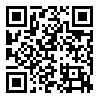BibTeX | RIS | EndNote | Medlars | ProCite | Reference Manager | RefWorks
Send citation to:
URL: http://cjdr.ir/article-1-150-en.html

 , Manouchehr Rahmati Kamel
, Manouchehr Rahmati Kamel 

 , Pouyan Amini Shakib
, Pouyan Amini Shakib 

 , Maysam Mirzaie *
, Maysam Mirzaie * 

 , Ali Bijani
, Ali Bijani 


Introduction: The bonding process of the brackets to enamel has been a critical issue in orthodontic research. The purpose of this study was to evaluate the shear bond strength of 3 light-cured adhesives (transbond XT, Z250, light bond).
Materials &Methods: In this study sixty extracted human premolars were collected and randomly divided into 3 test groups. All teeth were etched by 37% phosphoric acid. In first group brackets were bonded by Transbond XT adhesive, in group two brackets were bonded by Light bond adhesive and in third group were bonded by filtek Z250 composite. All of them were cured with Ortholux xt for 40 seconds.24 hours after thermocycling, Shear Bond Strength (SBS) values of these brackets were recorded using a Universal Testing Machine. Adhesive Remnant Index (ARI) scores were determined after the failure of the brackets, using Stereo Microscope the data were analyzed using ANOVA and Chi-square tests.
Results: Mean shear bond strength of Transbond XT, light bond and Z250 were 28.9±2.25 MPa, 25.06±1.98 MPa and 26.8±2.57 MPa, respectively. No significant difference was observed in the SBS among the groups and a clinically acceptable SBS was found for the three adhesives. ARI scores were not significantly different between the various groups (P>0.05).
Conclusion: This study showed that the Z250 can be used as light bond and transbond xt to bond orthodontic brackets and ARI and SBS scores were not significantly different.
| Rights and permissions | |
 |
This work is licensed under a Creative Commons Attribution-NonCommercial 4.0 International License. |





